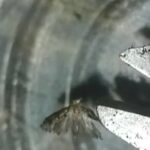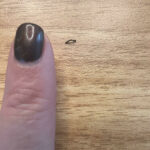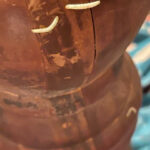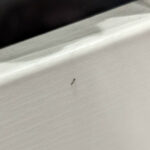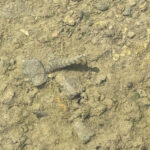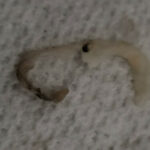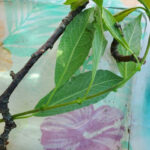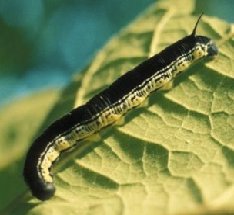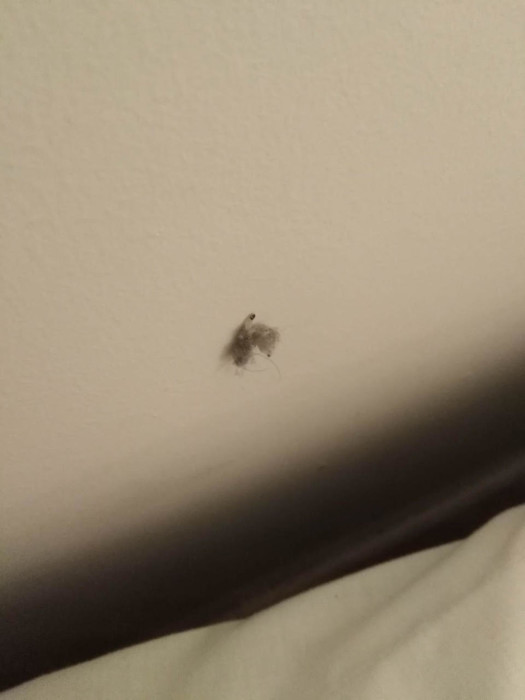
“What fresh hell is this?” asks this reader about the larva-like creature buried in a piece of lint pictured below. He describes it as having a “long white body and dark head.”
“I keep seeing what looks like natural clumps of fluff and dust stuck to my ceiling”, he continues. “One day I opened one up and found a small maggot inside. From reading your site they seem like carpet moths? Except instead of spinning their own cocoon they drag fluff and dirt up my wall and attach themselves to the ceiling suspiciously directly over my bed. Is this normal behavior for a carpet moth? I live in Ireland.”
To answer our reader’s question, yes these probably are what he refers to as ‘carpet moths’. The more commonly used name is ‘clothes moth’, and the ‘maggot’ he found would thus be the larva of a clothes moth. In particular, we think this is a casemaking clothes moth larva. We think this due to the behavior our reader described.
Casemaking clothes moth larvae feed on items made from organic-based materials. Usually such items come in the form of textiles and textile-covered furniture, such as bed sheets, upholstery, clothing and rugs/carpets. These clothes moth larvae in particular will spin silken tubes in which they hide while eating their findings, hence the name.
It seems as though the larva our reader found is dragging their food up to their ‘hiding spot’ which is over our reader’s bed. This makes sense in terms of staying near a food source (a bed being one of the best), as clothes moth larvae tend to do that, but it seems that this particular larva is not that good at remaining inconspicuous.
So yes, this is normal for a clothes moth larva, but they tend to be better at hiding their behavior. This is actually lucky for our reader though, as the quicker one spots these larvae, the easier it is to prevent infestation. We recommend that he vacuums around his bed, clean the ceiling over his bed (and wherever he finds the larvae), and that he launder his bed sheets and pillow cases (and any other textiles on or near his bed that the larvae would like).
In the case that our reader discovers more roaming larvae, and he thinks he may be experiencing an infestation, we recommend consulting this past “article on clothes moth larvae” of ours which details how to combat a clothes moth infestation.
Additionally, we just want to add that, despite being household pests, clothes moth larvae are not harmful to humans or pets, so our reader does not need to worry about that.
To conclude, the “maggot” that our reader found dragging “clumps of fluff” up his walls is a casemaking clothes moth larva. We hope this article proves helpful, and we wish him the very best!
All About Worms is always free, always reader-supported. Your tips via CashApp, Venmo, or Paypal are appreciated! Receipts will come from ISIPP Publishing.
You might also find these guys interesting!






